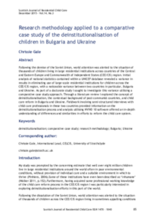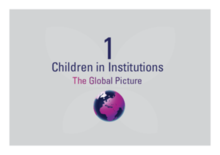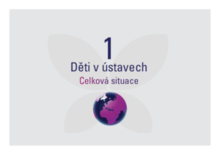Displaying 431 - 440 of 744
In this short video, Amanda Thorsteinsson documents the proliferation of orphanages in Uganda and the role of well-intentioned Westerners in contributing to this problem.
The Bucharest Early Intervention Project (BEIP) examined the outcomes for children who were originally placed in institutions; these children were randomized into two groups and followed longitudinally, with some being moved into foster care and others remaining in institutional care. This study reports on the brain electrical activity (electroencephalogram, or “EEG”) of 12-year-old children in this study, in order to examine the impact of movement to foster care after early psychological deprivation as a result of institutionalization.
In this article, a Human Rights Watch researcher describes her personal experiences meeting adults and children in the Western Balkans who have spent their lives hidden away in institutions because they have a disability.
This study discusses a variance in results in eliminating use of large-scale residential institutions for children across the CEE/CIS region.
This article explores how the demand for orphanage tourism, whether from volunteers or holidaymakers visiting or donating, can fuel child trafficking and abuse.
Esta publicación muestra el número de niños que viven en instituciones de todo el mundo.
This publication maps the number of children living in institutions worldwide.
เอกสารฉบับนี้แผนที่จำนวนของเด็กที่อาศัยอยู่ในสถาบันการศึกษาทั่วโลก ประมาณหนึ่งทำให้รวมถึงแปดล้านบาทแม้ว่าช่องว่างที่กำหนดในระดับโลกและสถิติบ่งชี้ว่ามีหลายบ้านของเด็กที่ไม่ได้จดทะเบียนของตัวเลขที่แท้จริงอาจจะดีที่สูงขึ้นมาก
Tato publikace mapuje počet dětí žijících v ústavech po celém světě.
Тази публикация карти на броя на децата, живеещи в институции по целия свят.







